Anatomy of the Dart
Darts - Ugh! Nobody seems to like them. When I first started sewing, at the age of five, I made “dresses” for my Barbie dolls. They consisted of a rectangle of fabric with a holes cut for the head and arms.


To show off Barbie's figure, I needed to add darts. But, at the time I knew nothing about darts.

So...what exactly are darts?
- Darts are triangular-shaped folds of fabric essential in molding a two-dimensional piece of fabric
over a three-dimensional body where it bulges.
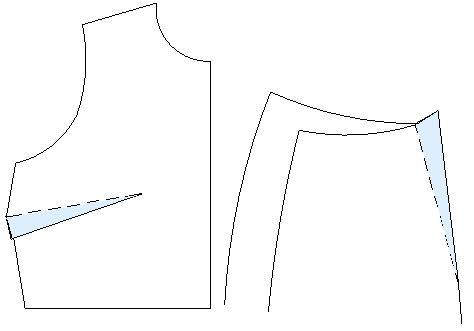
Darts
- Typical body bulges are the bustline, hipline, shoulder blades, abdomen, buttocks, and elbows.
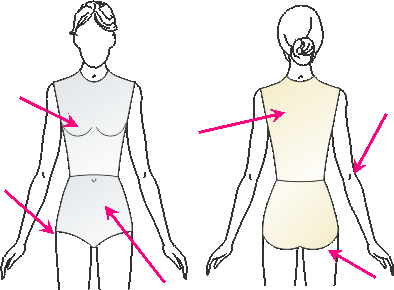
Body Bulges
- Darts can come to a single point such as side bust or back shoulder darts.
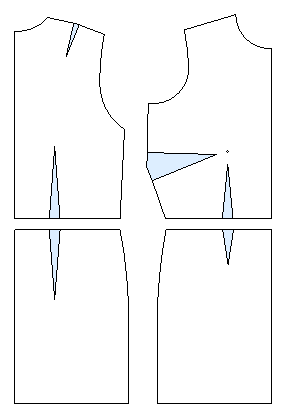
Single-Ended Darts
- Darts can also be pointed on each end such as waistline darts for sheath styles.
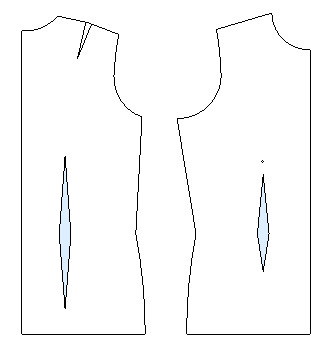
Double-Ended Darts
- Body deformities such as dowager hump may also produce bulges.
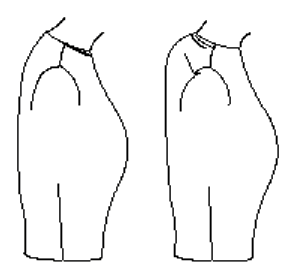
Dowager Hump
- If you have body bulges, you NEED darts.
What you many not realize is that many seams in a garment are some type of "dart". Side seams, shoulder seams, and sleeve underarm seams are also "darts". Any seam that is changing the garment from a larger circumference to a smaller circumference is in effect darting that area of the garment.
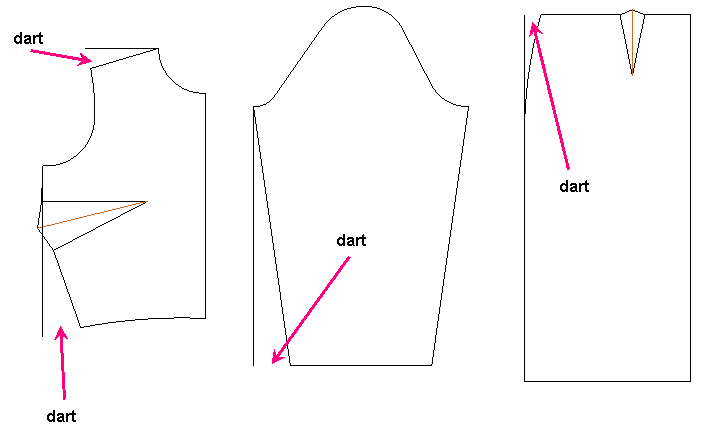
Also Darts
What are dart equivalents?
If you are not a fan of the lowly dart, it can be converted from a triangular shaped fold of fabric to other design devices known as dart equivalents.
- Dart equivalents include flare, gathers, pleats, princess seams, and tucks.
- Dart equivalents provide all sorts of design possibilities while still improving the fit of the garment on the body.
- Dart equivalents change the way the fabric is controlled over the body bulges but still point toward the apex (highest point) of the bulge.
- Fabric stretch can also be used as a dart equivalent but that is a subject for a different article.
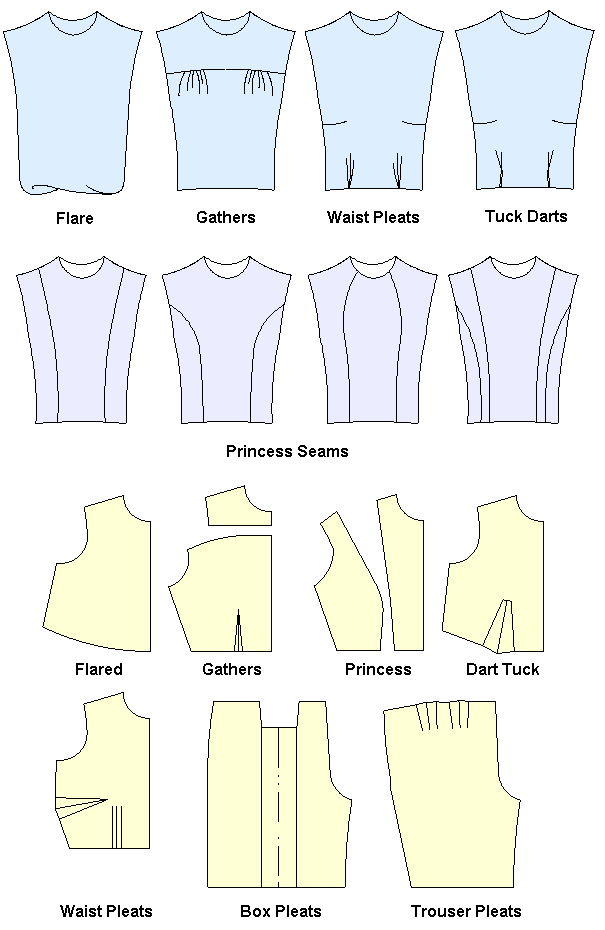
Darts Equivalents
Why use darts?
- Darts and dart equivalents are both functional and decorative.
- Placement and number of darts can be used to create an unlimted number of different styles.
- Darts can be used very effectively in shaping fabric to the body to create better fitting garments, hide figure flaws, and enhance figure strengths.
- Front bodice darts are used to control fabric over the breats.
- Skirt and pant waistline darts are used to shape fabric between the waistline and hipline.
- Back darts can be used to accommodate dowager hump, scoliosis, and other back body shape characteristics.
- Darts can be used to accommodate a pregnant belly as it grows.
Darts are really not that difficult to understand but they are essential to the styling and fit of any garment. A few key terms will help you to better understand the concept of darts so that you can use them more effectively in all of the garments you design and fit.
How are darts formed?
- For the front bodice, the size of the bust and waist darts are initially calculated based on the difference between the chest circumference and the waist circumference.
- Additional measurements such as the under bust or high bust can be used
to increase or decrease the size of the bust dart to account for the size and volume of the breasts.
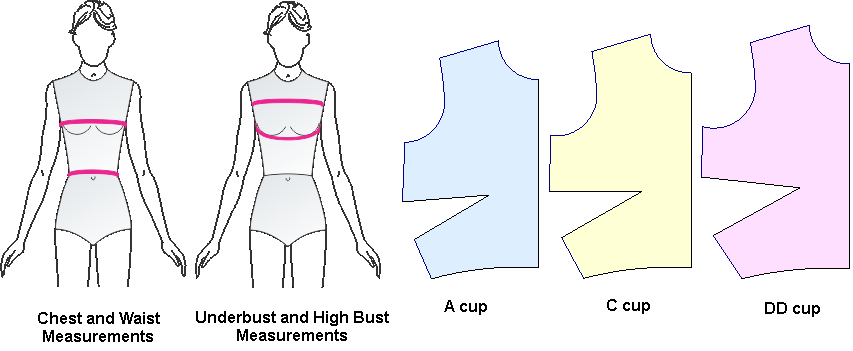
Front Bodice Darts
- The back shoulder dart is determined by the difference between the front and back shoulder widths and lengths.
- The front and back shoulder slope measurements also influence the size of a back shoulder dart.
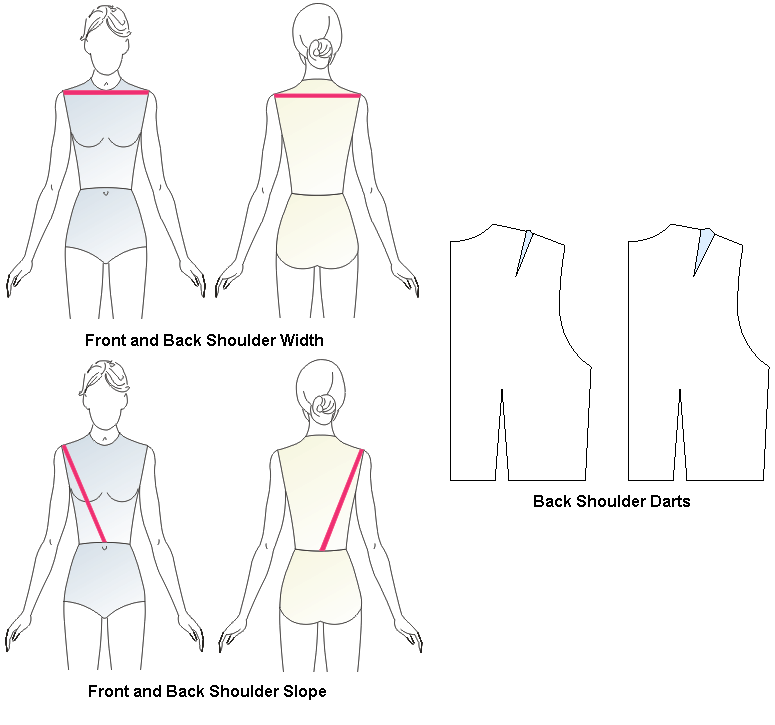
Back Shoulder Darts
- Pants and skirt waistline darts are formed based on the difference between the waist and hip circumference.
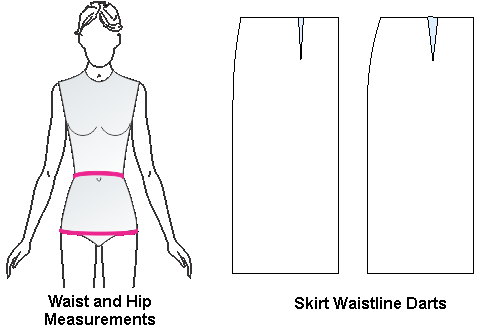
Skirt Waistline Darts
What are dart points?
- The dart point is the end point of the dart where the two dart legs meet to form a triangle.
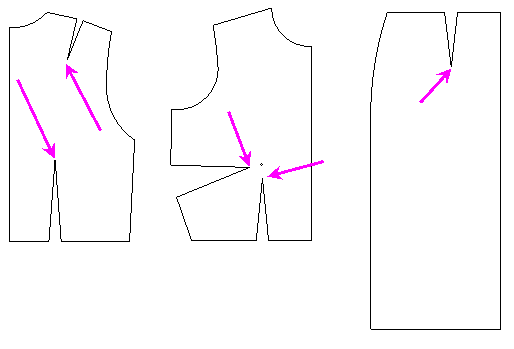
Dart Points
- The dart point must always point to the body bulge it controls or the fabric will not be controlled where it is needed most.
- Bust darts always point toward the apex of the breasts.
- The back shoulder dart always points toward the shoulder blades.
- The back bodice waist darts always point toward the shoulder blades.
- Pant and skirt waistline darts always point toward the hip depth.
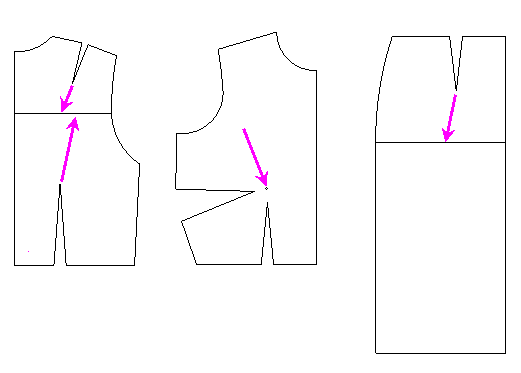
Dart Points
What is the dart angle and why should you care?
(Warning: a little scary geometry here.)
- The dart angle is the angle formed where the two dart legs meet to form the dart point.
- Dart angles (like all other angles in geometry) are expressed in degrees or a portion of a circle.
- To make patterns and transfer darts to create new styles, it is not required to know the actual angle of the dart in degrees so long as the dart angle is preserved when moving the dart to a new location.
- The angle of the dart must not change in order to maintain the fit of the garment.
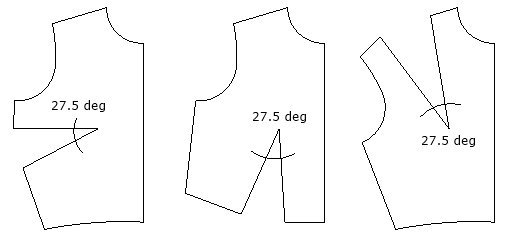
Dart Angles
- As the size or volume of the body bulge increases, the dart angle must also increase to
accommodate the size of the area it covers.
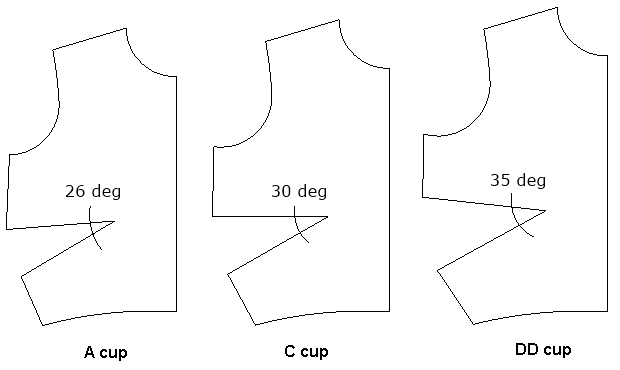
Dart Angles
- The length of the dart legs will vary depending upon the position of the apex (highest point) of the bulge.
- The width between the dart legs will also vary depending upon the distance from the dart point to the end of the dart legs.
- The length of the dart legs and the width across the end of the dart are not relevant when transferring
darts to new locations on the pattern and preserving the fit of the garment.
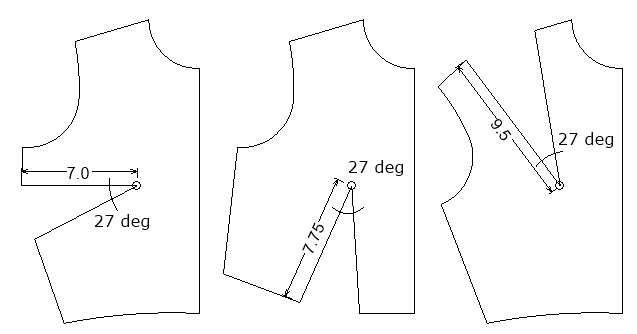
Dart Leg Length
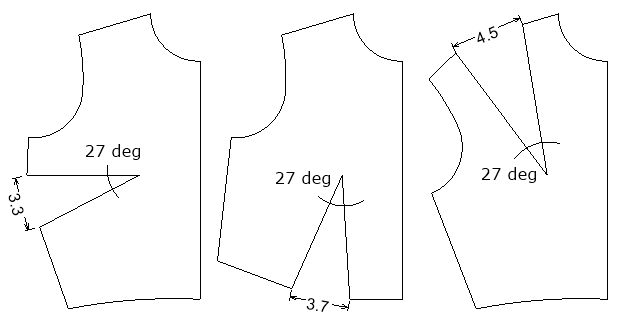
Dart End Width
What is dart uptake?
- Dart uptake is the excess fabric removed when the dart is sewn to control the fit of the garment over the body bulge.
- The uptake amount is directly controlled by the differences between the measurements where the body bulges.
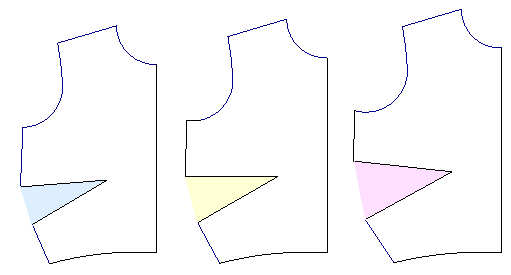
Dart Uptake
How are darts placed?
- Front bodice darts are typically placed at the side bust or shoulder and the waistline in the fitting garments.
- Once the fitting garments have been perfected, the dart legs can be transferred (also called rotated) to almost any location on the perimeter of the pattern so long as the dart point still points toward the body bulge and the dart angle is the same in the new location.
- The length of the dart legs and the width across the end of the dart will vary as the distance between the bulge apex and the perimeter changes.
- The length of the dart legs and the width across the end of the darts do not in any way change the fit of the final garment so long as the angle of the dart and position of the dart point is maintained.
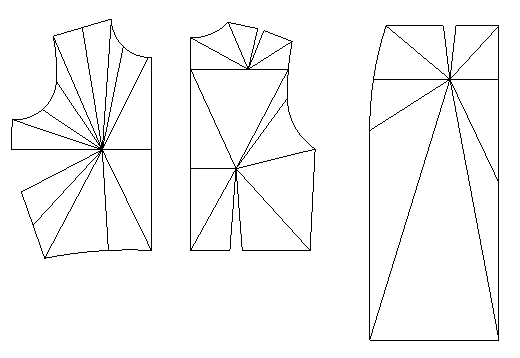
Dart Locations
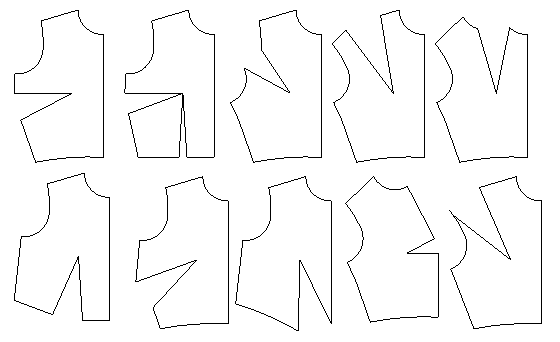
Side bodice dart rotated to new locations – dart angles are exactly the same
What are working darts versus design darts?
There are two types of darts to know - working darts and design darts.
- Working darts are darts drafted to the apex of the body bulge.
- Design darts are darts whose dart point has been moved away from the apex to create a smoother, more natural looking garment.
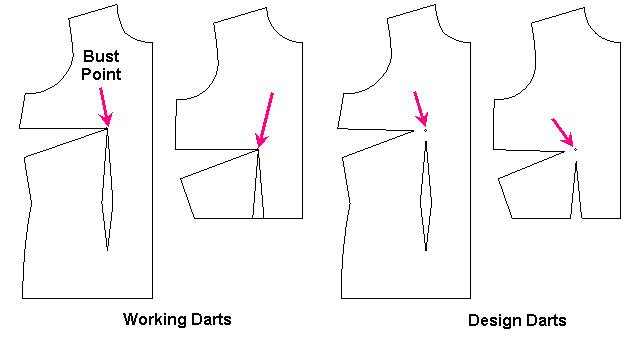
Working vs Design Darts
- For front bust darts, the working dart point is drafted exactly to the bust apex.
- The bust apex is determined by the shoulder/neckline to bust point vertical measurement
and the bust point to bust point horizontal measurement.
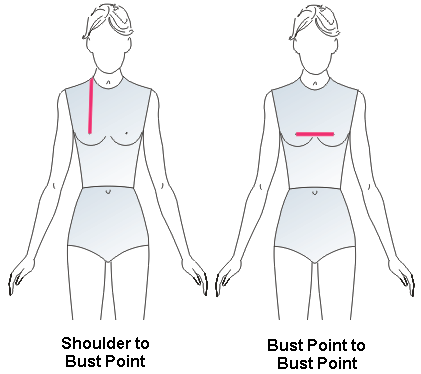
Bust Point Measurements
- Back shoulder working darts are drafted to the apex of the back shoulder blade.
- Working darts on lower body garments are drafted to the hip depth or the location below the waistline where the circumference of the body is greatest.
- Design darts allow the body bulges to relax into the space created for the bulge and not call attention to the bulge itself.
- Once the dart point has been moved from the apex, the dart becomes a design dart. It can no longer be used to transfer the dart uptake to other areas of the pattern.
- If a design dart is transferred to a new location, the garment will no longer fit correctly.
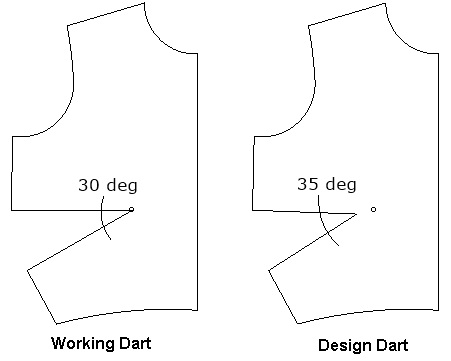
Dart Angle Changes in Design Darts
The following table provides a guideline for placement of the bust dart point in relation to the bust apex.
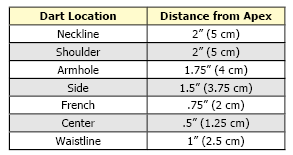
What is trueing a dart?
The wide end of the dart must be shaped such that when the dart is folded and stitched, the stitching lines for the dart end match those of the seam line it folds into. This shaping of the dart end is called trueing the dart. The following guidelines can be used to determine which way to fold and stitch the dart.
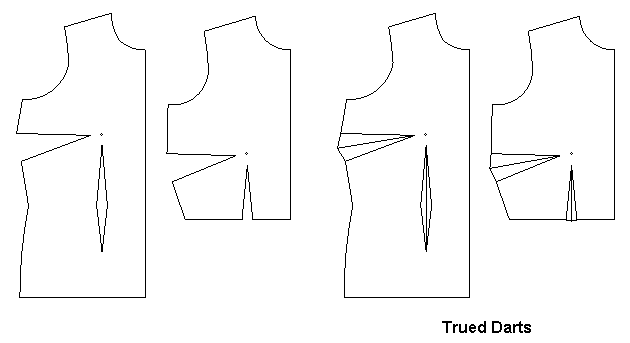
- Horizontal darts, pleats, and tucks (side bust, center, french, armscye, neckline, elbow) fold down toward the bottom of the pattern.
- Vertical darts, pleats, and tucks (shoulder, waist) fold toward the center line of the pattern (center front or center back).
- Folding vertical darts toward the centers places the bulk of the dart in the flat areas of the body and is usually more flattering.
- Decorative darts, pleats, and tucks are folded according to the dictates of the design or style.
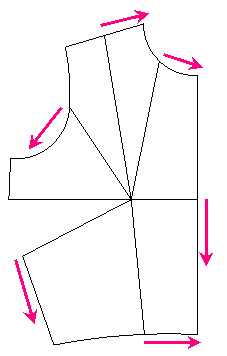
Directions for Folding Darts
So, now you know all you need to know about darts. Go forth, design, and do not fear the dart!
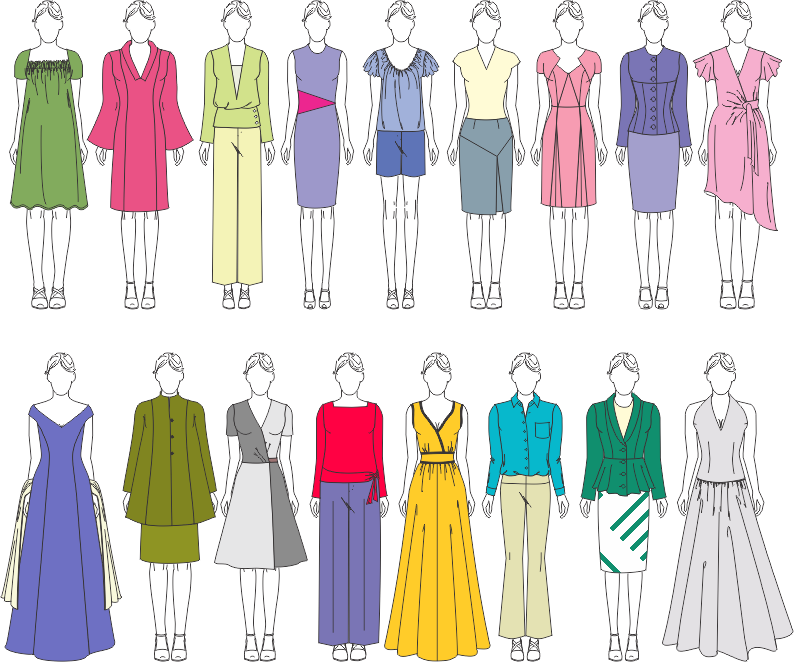
Oh! the possibilities!
For more inspiring dart ideas, check out my Anatomy and the Dart Pinterest Board



